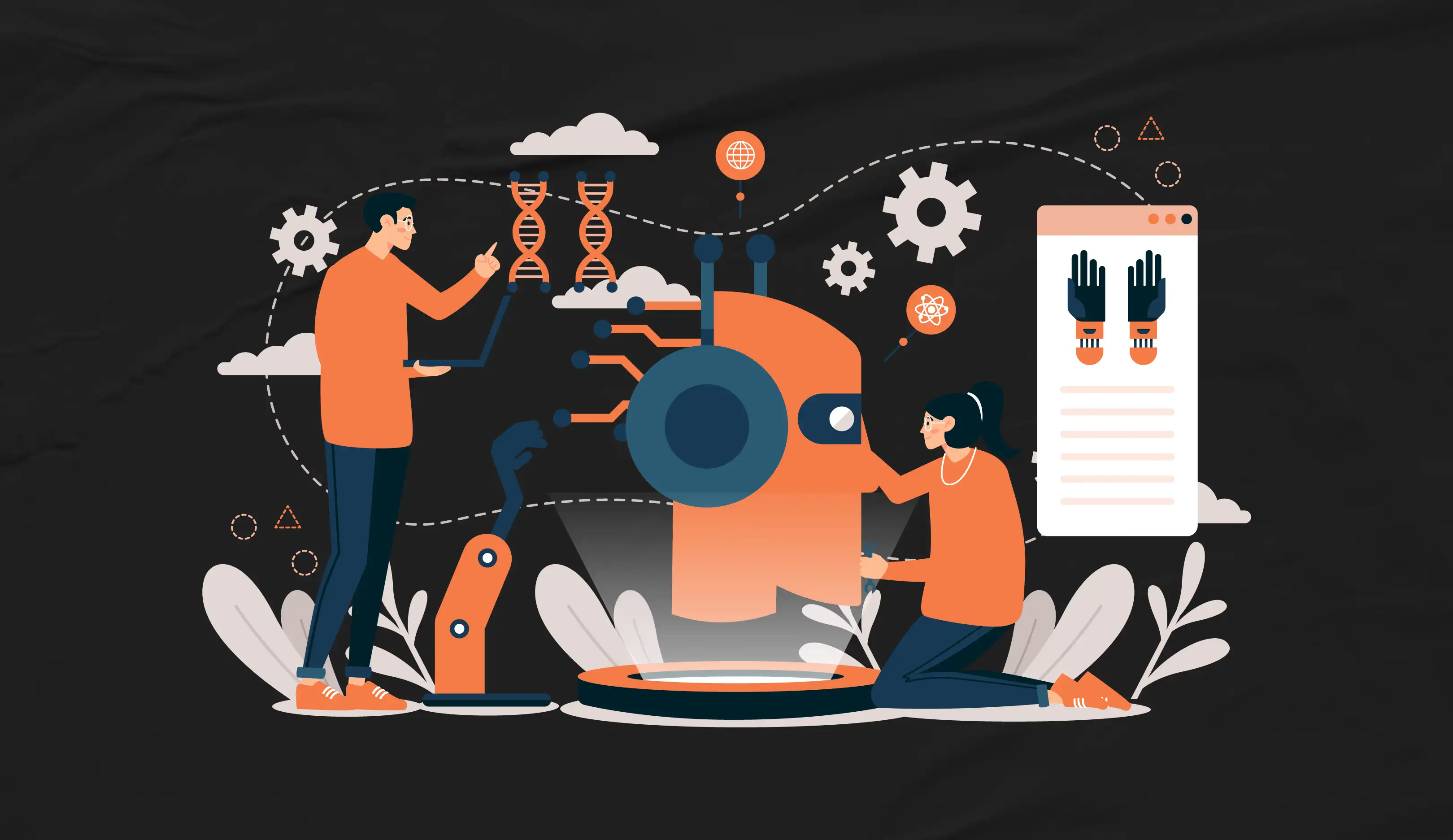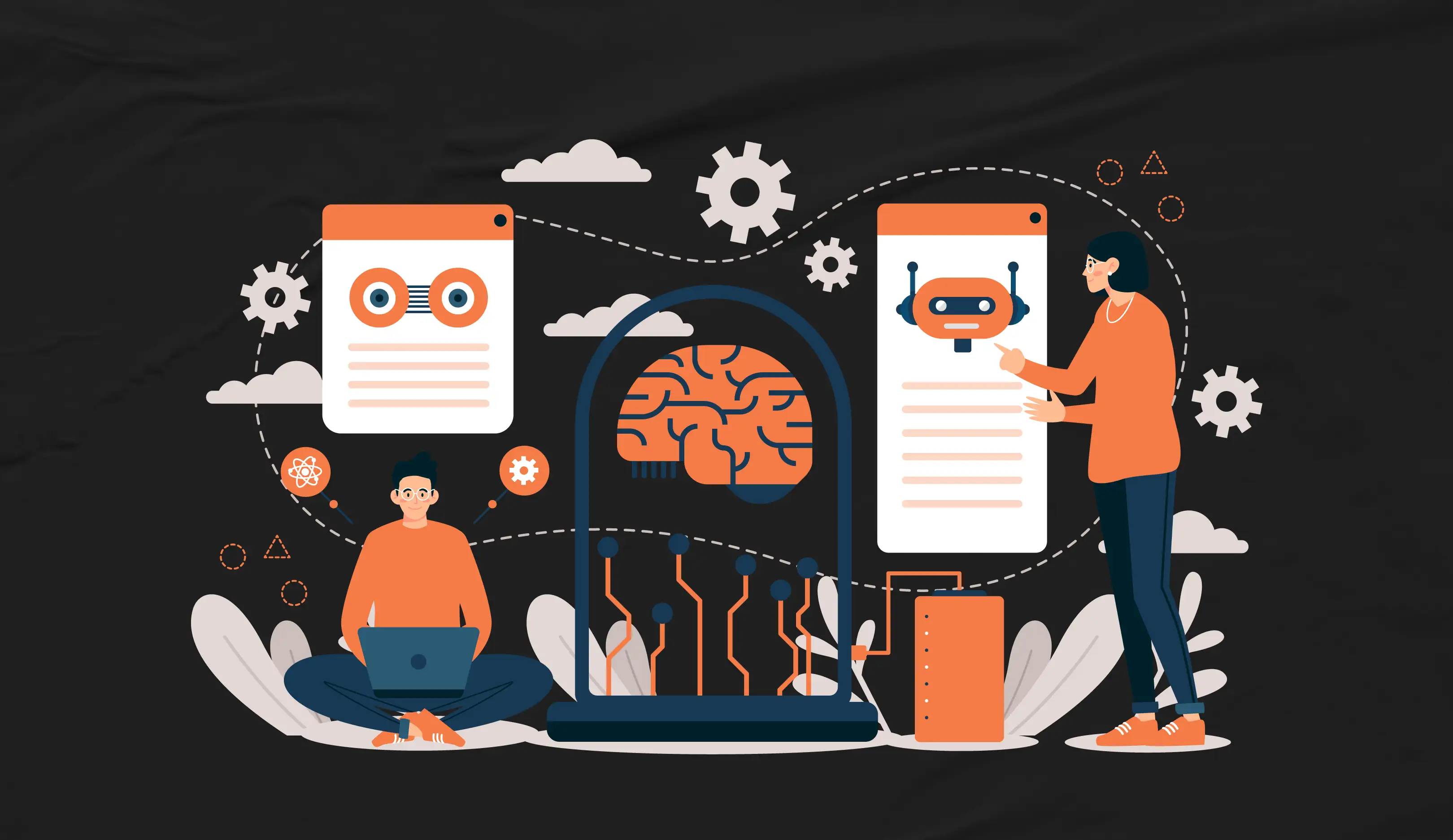How to Build an AI Software: An Initial Guide
 Marketing IBTI#Marketing IBTI
Marketing IBTI#Marketing IBTI
Artificial intelligence (AI) is rapidly transforming our world, from customer service chatbots to self-driving cars. If you're interested in using this powerful technology, you might be wondering how to build AI software.
Here’s the brief for you: To build AI software, start by identifying the problem you want to solve, then gather and clean relevant data. Choose the appropriate AI technology and build/train your model.
Test it thoroughly to ensure it works as expected, then deploy the model for use. Regularly update and refine your software to keep up with advancements in AI technology.
Okay, probably you might get confused seeing all the above steps in one setting. Don’t worry.
This guide breaks down the process into manageable steps, even for beginners.
Let’s get started.
First, Let’s Discuss Why Invest in AI Software
 Below are the top three reasons why creating AI software is an excellent opportunity for tech startup founders and software product companies.
Below are the top three reasons why creating AI software is an excellent opportunity for tech startup founders and software product companies.
- It makes better things for users.
- Keeps you ahead in business.
- Leads to more money.
Here’s some fact for you: Accenture says AI could make some countries twice as rich by 2035. And the AI software market might reach $126 billion by 2025.
Steps on How to Build AI Software
To make AI software, the development process is similar to constructing any other software application, but with a few additional steps.
Here are seven main steps to create AI software from scratch:
Identify a Problem to Solve
The first step is to identify a specific problem an AI solution can address. AI technology excels at tasks involving pattern recognition and data analysis. Is there a repetitive problem-solving task in your business that could benefit from automation?
Here are some areas where AI can be helpful:
- Customer service: Chatbots can answer FAQs and resolve basic issues. This frees up human agents for complex inquiries.
- Data analysis: AI can uncover any hidden patterns and trends in large datasets, which ultimately leads to better decision-making.
- Image recognition: AI can be trained to identify objects and scenes in images, with applications in security, manufacturing, and healthcare.
Gather Data
AI learns from data. The quality and quantity of your data will significantly impact the performance of your AI software.
There's a saying: "Your model is only as good as the data it uses." What does "right data" mean? This means that data that fits the problem covers all possibilities and doesn't have any biases.
- Structured data: This is data that is organized in a predefined format, like tables or spreadsheets. It's ideal for training many AI models.
- Unstructured data: This includes text, images, and videos. Natural Language Processing (NLP) techniques are needed to make this data usable for AI.
Most data in AI projects is unstructured, so it needs to be cleaned up before being used.
Clean and then Prepare the Data for Model Training
Step 3 in building an AI tool is data cleaning. Here's what it involves:
- Organizing the data.
- Removing incomplete entries.
- Sorting it to make it usable for AI training.
After cleaning the data, you upload it. But remember, whenever you add new data or change existing data, you have to train the AI model again. This training process is a big part of AI development and can take a while.
So, gathering data for AI isn't just about getting lots of info. It's also about making sure it's the right kind of info. You need to balance quantity, quality, and structure to prepare it well for effective AI training.
Expert Tips for Organizing Your Data Effectively
To make sure your AI model works well, you need to organize your data properly. Here are some tips on how we do it:
- Use clear file names: Choose names that describe what's in the file. This helps you find the right info quickly.
- Add context: Make sure each piece of data has info about what it's for. This helps the AI understand why the data is important.
- Label your data: Put clear labels on your text and data so the chatbot can find it easily.
- Keep tables simple: If you're using tables, make them easy for the chatbot to understand by using plain text formats.
- Don't repeat data: Try not to have the same info in lots of different files. It's easier to keep things updated if you only have to change them in one place.
Choose the Right AI Technology
 Once you've got the data, it's time to pick the AI tech that fits your needs. There are lots of options, like:
Once you've got the data, it's time to pick the AI tech that fits your needs. There are lots of options, like:
- Machine learning
- Speech recognition
- Natural language processing
- Augmented reality, and more.
Here's a brief overview of some common choices:
- Machine learning: This allows AI to learn from data without explicit programming.
- Deep learning: A subfield of machine learning using artificial neural networks inspired by the human brain. It excels at complex tasks like computer vision and natural language processing.
Train and Fine-tune Your Model
After picking the AI tech, it's time to make and train the model with the data you got. It's a tricky job that needs AI and data science skills.
But hey, you don't always need to write code to make your AI model. There are easy ways to do it. One way is to use a no-code AI platform. Just give it your data, and it trains the model for you.
Here are some no-code AI platforms you might like:
- Google Cloud AutoML: You can make AI models for things like sorting images and text and understanding language.
- Amazon SageMaker: Like Google Cloud AutoML, you can make AI models for things like sorting images and text and understanding language.
- Microsoft Azure Machine Learning: This platform lets you make AI models for tasks like sorting images and text and understanding language without needing to code.
If you don't want to code or don't have engineers, you can try using a visual programming language. These let you make AI models by dragging and dropping code blocks. It's an easy way to build AI models without knowing how to code.
Then, here comes another key part: Fine-tuning. It is an iterative process where you adjust the model based on its performance. You might need to provide additional data or adjust the AI algorithms to improve accuracy.
Test and Deploy Your AI Software
Once you're satisfied with the model's performance, it's time to test it in a controlled environment. This helps identify and address any remaining issues.
Finally, deploy your AI software into the real world. This could involve integrating it with your existing systems or creating a user-friendly AI platform.
In addition, check out our informative blog to get a detailed idea of the remote software development team.
AI Challenges in Software Development
 AI is changing the game in software development, but like any game, there are rules and challenges to tackle. Here are the common challenges:
AI is changing the game in software development, but like any game, there are rules and challenges to tackle. Here are the common challenges:
- Understanding Code: AI can write code, but it might not fully grasp what's happening underneath. This can lead to bugs and security issues.
- Data Compliance: Dealing with data quality, accessibility, governance, and security is crucial. Your data needs to be high-quality and follow compliance rules for your industry.
- Ethical and Legal Matters: Integrating AI into products dealing with personal info brings ethical and legal concerns like privacy, bias, and transparency. These need careful consideration.
- Mistakes Happen: Even smart AI can make errors and give out inaccurate info. Human experts step in to fix these mistakes.
- Attracting Talent: Finding and keeping top AI professionals is tough due to high demand. Businesses struggle to find experts to handle AI tech.
Besides, check out our informative blog to learn how to choose the right account management software for your small business.
Choose IBTI for Reliable AI Software Development Services
IBTI offers top-notch AI software development services backed by a skilled team with a stellar track record. We prioritize timely delivery within budget and ensure reliable, efficient, and high-quality solutions.
With our agile approach, we provide regular updates and adapt to changing project needs. Our comprehensive support extends beyond project completion, guaranteeing client satisfaction.
Choose IBTI for tailored solutions that give your business a competitive edge in the digital field. Get started by reaching out through our website or contacting us directly for a consultation.
Let's build your software together!
Besides, visit our informative blog to learn about automation in software development.
Wrapping Up
In conclusion, anyone who wants to learn how to make AI software should just follow the steps in this guide, "How to Build an AI Software." With determination, patience, and the appropriate tools, you can create cool AI stuff that matters. So, get ready, get set, and start making your AI software today!
FAQs
How much data do I need to train an AI software?
The amount of data depends on the complexity of your AI solution. Generally, more data leads to better results. However, data quality is equally important. Clean and relevant data will yield better performance than a large dataset with errors.
How long does it take to build an AI software?
The development timeline depends on the scope of your project. Simple tasks might take weeks, while complex AI solutions can require months or even years to develop and refine.
How can I ensure the security of my AI software?
Security is an important aspect of AI development. Data security breaches can expose sensitive information. Implementing robust security measures throughout the development process is essential.

Marketing IBTI
#Marketing IBTI🇧🇷 Português
A IBTI é uma empresa de tecnologia com mais de 12 anos de experiência em desenvolvimento de sistemas, apps e soluções sob demanda. Atuamos no Brasil e no exterior com foco em qualidade, inovação e eficiência.
🇺🇸 English
IBTI is a tech company with over 12 years of experience developing custom software, apps, and IT-as-a-service solutions. We serve clients in Brazil and abroad, with a strong focus on quality, innovation, and efficiency.